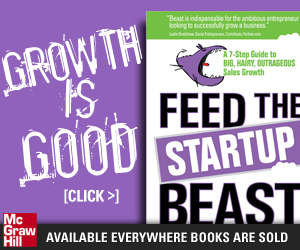Your Sales Curve: Hockey Sticks or Saw Blades?
Everyone loves the hockey stick. The hockey stick is the sales curve that every new business envisions for themselves; every new marketing and sales manager fantasizes about creating; and every president wants to show to his or her board. The hockey stick represents undeniable success. Everyone gets rich.
themselves; every new marketing and sales manager fantasizes about creating; and every president wants to show to his or her board. The hockey stick represents undeniable success. Everyone gets rich.
So how does one create a hockey stick sales curve? Well, the basic ingredients would be to:
- create a product or service that enough companies really want;
- communicate with the people in those companies who make decisions on said product or service, and give them a reason to put up their hands, identifying themselves to you, and;
- have a marketing and sales team trained and ready to bring the hand-wavers to a quick and elegant close.
Then do it again over and over, faster and faster.
Most companies fail at the first part – creating a product or service that enough people really want and value. Everything after that becomes academic. If there aren’t enough people who really want what you have to sell, the best sales and marketing strategy in the world will only keep you going so long. And your sales curve will resemble something a lot closer to the jagged side of a saw blade than a hockey stick.

At the end of the day, if you have a vision of a hockey stick, but only a saw blade product or service to sell, you will end up wasting a lot of time and resources that could have been better applied elsewhere.
How do you know if you’re destined for hockey sticks or saw blades? There’s only one place you can go to get an unbiased answer to that question: the people who have bought from you, also known as your customers.
“That’s obvious,” you say, “everyone knows that”. And yet most companies put talking to their customers – really talking to their customers – in that “Important/Not Urgent” bucket, which means the discussion is frequently postponed because there are more “pressing” issues to deal with. I would argue there are no more pressing issues.
So here are three simple questions that Thomas J. DeLong offered on his HBR blog that I thought could be nicely re-purposed for use with your customers. The answers to these questions will start giving you the sense of whether your business has the legs to make the run up the hockey stick curve:
- What should we stop doing?
- What should we keep doing?
- What should we start doing?
Simple, to the point, revealing, and very easy to do. Try it with one customer and see what happens.
About Drew Williams
My name is Drew Williams. I’m an author and marketing entrepreneur. “A what?”, you say. I call someone who’s passionate about building businesses a marketing entrepreneur. So that’s me. Full Profile | Google+






Recent Comments